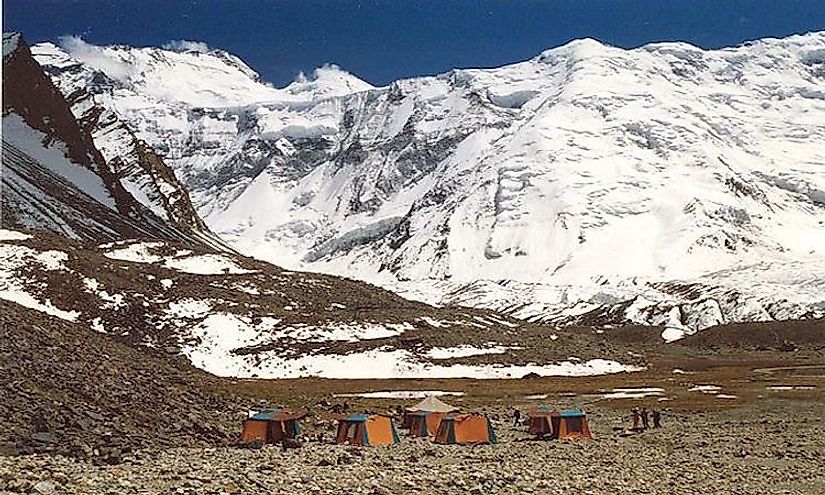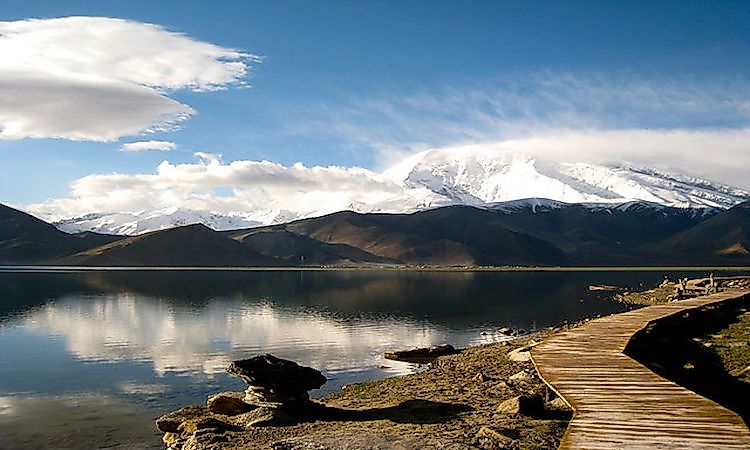Tajikistan National Park - Mountains Of The Pamirs

Tajikistan, officially the Republic of Tajikistan is a landlocked country in Central Asia. Its terrain is mountainous and it has a population of approximately 8 million. It covers an area of 55,300 square miles. It borders Afghanistan to the south and Kyrgyzstan to the north, China to the east and Uzbekistan borders it to the west. It is headed by the President and has four provinces. The Tajik is the majority ethnic group most of who speak Tajik and Russian. Mountains and hills cover 90% of the country. One of the major attractions of Tajikistan is the Tajikistan National Park also known as the Mountain of the Pamirs, the Tajik National Park or Pamir National Park.
5. Description
Tajikistan National Park is the largest park in Tajikistan and covers 18% of the country approximately 9653 square miles. The park is located in the eastern part of the country, and it is the third largest mountain ecosystem after the Karakorum Mountains and the Himalayas. The park lies at the center of the Pamir Knot. The park is home to a variety of wildlife including the snow leopard and the Marco Polo argali. The park lies at active tectonic plates and is frequented by earthquakes that have made the wildlife in the park scarcely populated. It was officially made a UNESCO world heritage site in 2013.
4. Historical Role
Tajik National Park was established in 1992, from 1989 to 1992, the ministry of environment conducted a feasibility study to establish a national park Tajikistan, then part of USSR. The Park was officially designated by the government in 1992 and became the first national park in USSR. The Pamir Mountains in the park were considered by trades as a strategic route between the Kashkar and Kokand. The mountainous routes linked the Chinese city of Xian and Parthia. Today, the park is home to thousands of species of animals and birds.
3. Tourism

Tajik National Park attracts thousands of researchers every year. Even though it is not frequently visited by tourists seeking to watch animals, it is a popular destination for those seeking adventure and seeking to test their survival limits. The Tamir Mountains in the pack attracts mountaineers. In 2009, the New York Times featured the park as a tourist destination, and 2013 saw a sharp rise in the number of tourists visiting the park. The tourism sector is among the growing sectors in Tajikistan.
2. Habitats and Biodiversity
Tajik National Park is characterized by steppe, grassland, desert, and alpine region. It experiences long cold winters; the average rainfall is 127mm. The park is home to the brown bear, the Marco Polo Sheep, and the bar-headed geese. The mountain is covered with snow throughout the year. The Fedchenko Glacier is the longest glacier outside the polar region. The mountain has some of the deepest gorges in the world. It has 70 rivers and 400 lakes.
1. Environmental Threats and Conservation Efforts
The park is under threat of losing its biodiversity to global warming that is causing a rise in temperature and the melting of glaciers in Mount Tajik. The melting of ice and glaciers is causing migration of wildlife such as the snow leopard and at the same time results in flooding of rivers. The conflict in neighboring Afghanistan has also taken a toll on the wildlife in the park; hunters hunt down wildlife in search of food as the seek refuge from the conflict zones.











